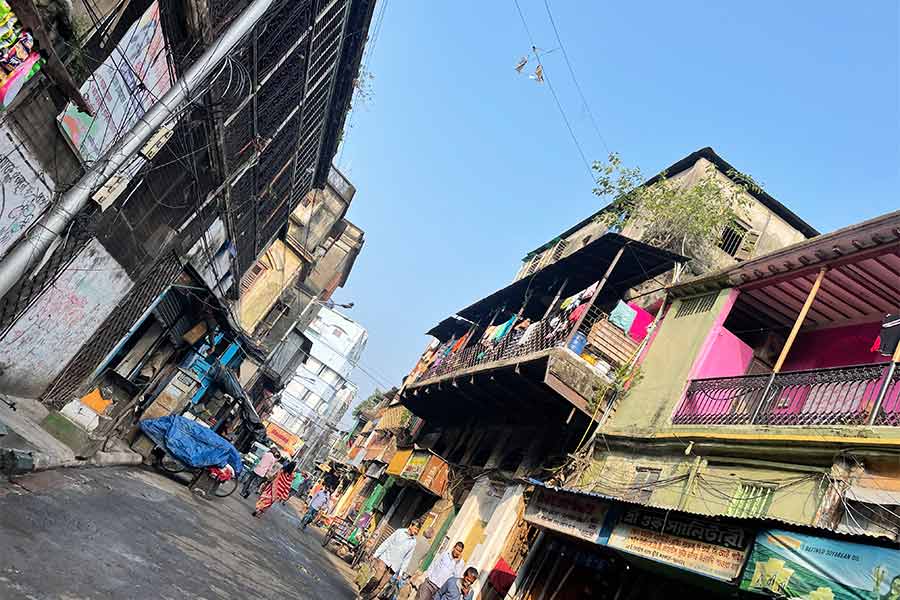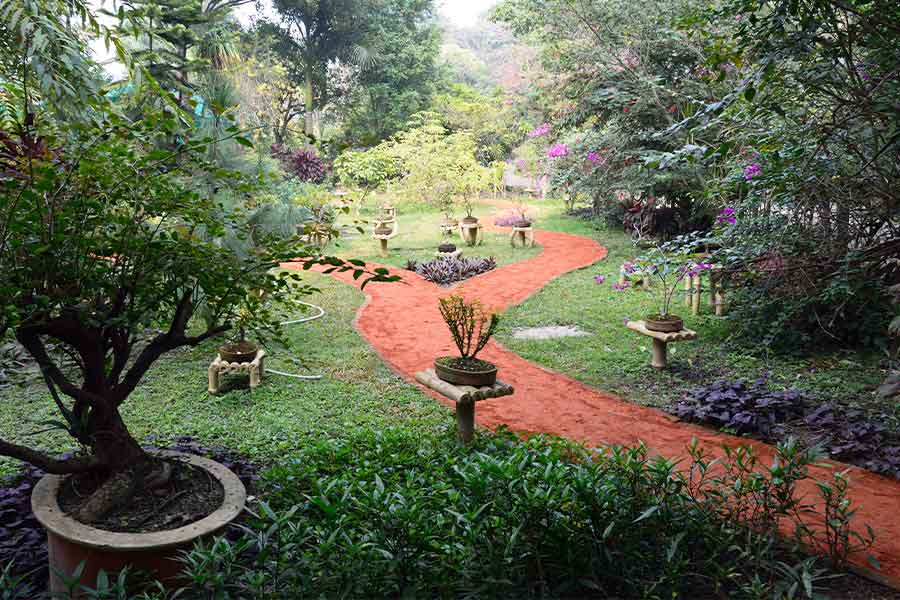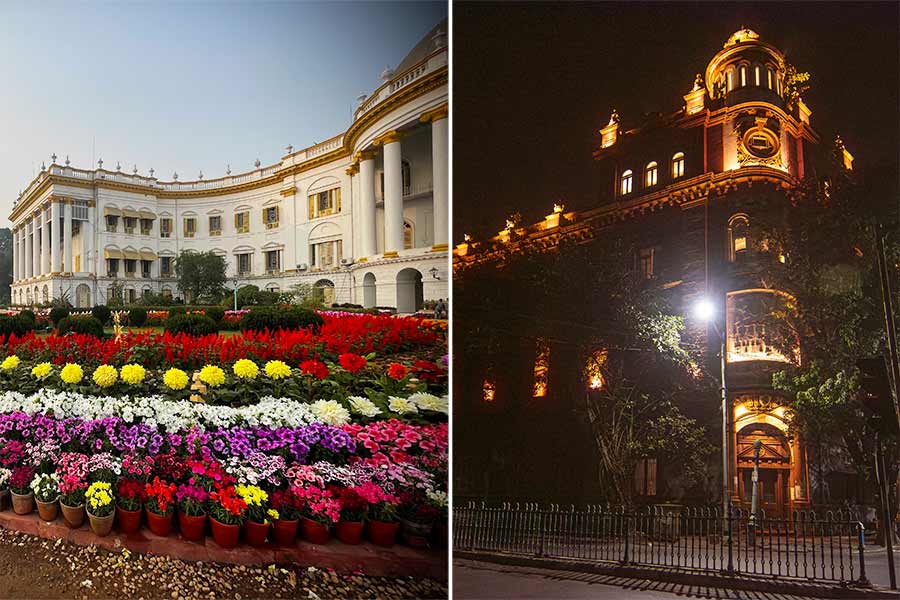There are a number of Calcutta parts where ‘Get lost!’ would be an incentive to explore. Bowbazar is one.
For its sheer size; this central Calcutta block is a collection of pin codes and municipal wards extending from Lenin Sarani in the south to BB Ganguly Street in the north and AJC Bose Road in the east to Chittaranjan Avenue in the west. The population that lives in it could be more than some cities of the world.
For the inter-related lanes and bylanes that encapsulate the city’s character; you can curate kilometres of circuitous walking without touching a road; you can soak the quaintness of sights, sounds and smells without getting a GPS-less fix of where you are.
For the easy friendfulness of those who live within, pleasantly surprised that someone should jump out of bed at 5.30am and care to visit a neighbourhood that most people wouldn’t give as much as a second nazar.
For its diverse characters: from the man on the first floor of an Akrur Dutta home who croons Kishore Kumar at 6.40am between snanghar bucketfuls to the chaiwala on Premchand Boral Street whose main wall has a large picture of Rafi and a smaller picture of the bhagwan he worships; from the mesmerising neighbourhood-filling chant coming from inside an Akrur Dutta Lane mandir at 7am to the radio news bulletin coming out of a first-floor bedroom on Hidaram Banerjee Lane.

A chaiwala on Premchand Boral Street, whose main wall has a large picture of Rafi and a smaller picture of the bhagwan he worships
For the greyed marble plaque with the name of the owner inscribed in italicised font on Thakurdas Palit Street; the yellow on the wall that has taken nearly six decades to decay to a palette that you won’t find on any Berger shade card on Sashi Bhushan Dey Street; the women putting themselves on professional display in bright red and silver sequins at 8am in Harkata Gali; the first-floor office where Kundan Lal Saigal signed contracts to sing nearly 90 years ago on Akrur Dutta Lane.
I went to Bowbazar to speak to Tarunbabu, who has assumed the role of the neighbourhood statesman with a perspective on everything, but more than all a PhD on the Bowbazar that was and now. I engaged him at the more publicly acceptable end of Premchand Boral Street; he drew out a chair and bellowed a ‘Duto patha!’ which in his Morse implied two bhaands of gorom cha. The following conversation flowed from that point onwards.

On Sashi Bhushan Dey Street, the yellow on a wall that has taken nearly six decades to decay to a palette that you won’t find on any Berger shade card
“The place we are sitting now was the location of an adda across the decades – from the time of my father and maybe his father as well, who knows. I have seen with my own eyes (‘nijer chokh’) around 20 people each morning; if you never knew this was an adda between friends, you might have skirted the road thinking that some agitation was in progress. The conversation would be energetic and even argumentative; it would start at 7am with someone coming with a newspaper that would be examined by five people, continuing till noon, though now looking back I wonder whether people didn’t need to report to office at 10am or to their homes for breakfast. And right through that morning would be discussions of what had happened the previous evening in the neighbourhood, or maidan, or Writers’ Building or some cinema hall. It was a live panel discussion decades before television channels got the idea.

Paper and post
“And sitting on the first floor presiding over this adda would be Raichand Boral, the second-most renowned personality of the neighbourhood. Raichand Boral of KL Saigal fame. Raichand Boral of Pankaj Mullick fame. Raichand Boral of Dadasaheb Phalke fame. Bolchi toh, he would be sitting in that verandah that you can see, soaking the morning sun. Khub mejaaji chhilen; the whisper is that when he lost his temper, he would chabuk his domestic help, kintu ki jani koto shotti, koto mitthay. What we do know – and our parents have spoken about this so often that this cannot be mitthay – is that on one occasion Kishore Kumar came to see him, stepped into the verandah to wave to a crowd that had by now filled half the neighbourhood, there was a chitkaar of ‘Shudhu ekta gaan’ and Kishore rolled the sleeve of his white kurta and sang two lines of a favourite number while Raichandbabu periodically admonished the crowd with ‘Chup kore bosho!’ There was no mic, but the very fact that Kishoreda amader jonnye geye chhilen became the narrative on which the neighbourhood legend was built. Aar ekta kotha, Babul Supriyo traces his ancestry to this house. He is a Boral chheley.
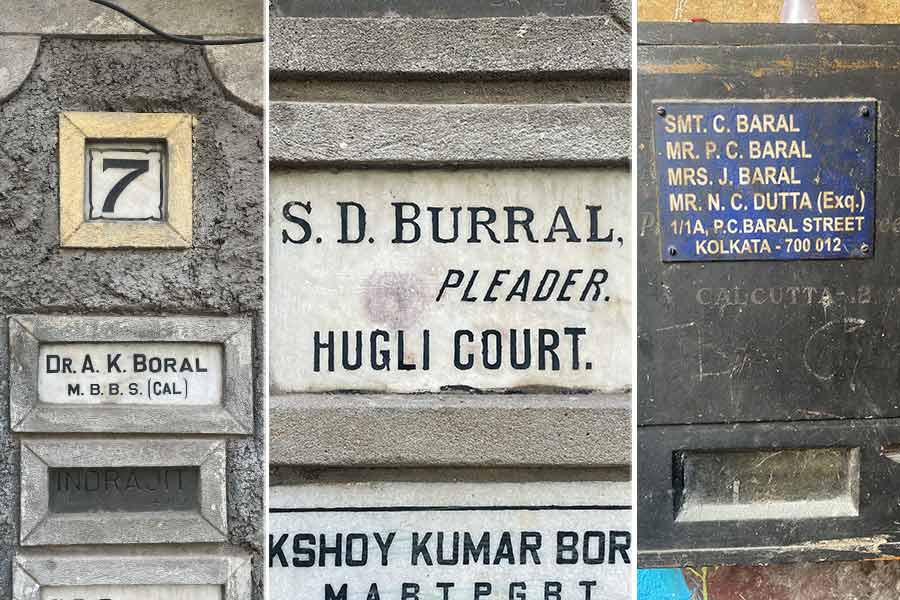
Nameplates of the Borals
“Raichandbabu was the second biggest personality of this neighbourhood. His house attracted a number of prominent lok – Hemantababu in his trademark half-sleeved kurta, Mannada (who sang Aah Radhakanto for us) and his uncle KC Dey (‘amader paraye onek din thakten.’) Raichandbabu’r ek kathaye cholay asto ora.
“The neighbourhood got ambitious and organised a large onusthan. To keep outsiders at a distance and prevent the special Manna Dey event from being monopolised by people from other neighbourhoods, a collapsible gate was created at the corner of Premchand Boral where it meets Nirmal Chander Street. I was at my relatives in Tollygunge; when I returned, I was not permitted entry. Just then someone recognised me, and I managed to sneak in. Hajaar-hajaar lok in one congested lane to hear just one singer. This must have happened more than 55 years ago. The arrangements, the importance, the organisers moving around with oversized badges on their chests. These are the memories that have created what we now refer to as ‘amader para’r culture.’ It is not just one thing baba; behind this are layers of memories.
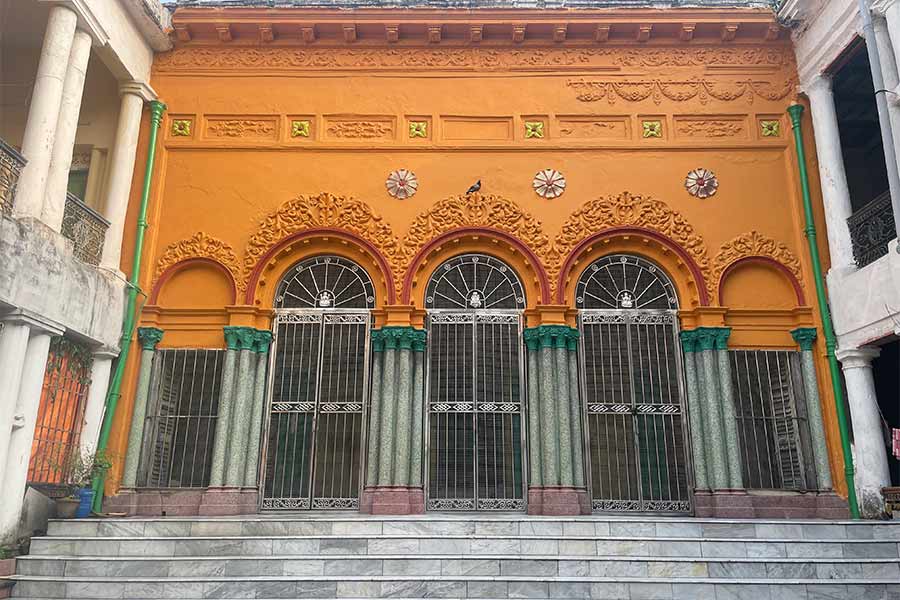
One of the better-maintained properties in the area
“We would always be hesitant about telling people where we stayed. If they heard ‘Premchand Boral’ they would turn their nose up because of the red-light area at the eastern end of the street. As a result, there was a family stipulation: ‘Rastaye berobi na!’ Or when someone asked us where we stayed, we would diplomatically say ‘Pashei!’ Generally, people never pushed us for the precise address, thank god.
“I vividly remember two adda groups on Premchand Boral Lane; each group pulled in about 30 people each evening; the conversations would extend late into the night for a city that otherwise developed a reputation for sleeping at 9pm. Neighbours would know who had stayed how late by the laughter that reverberated through the bylanes at night. Someone asked: ‘Eto late apnara koren ki? Bari jaoa hoye na?’ The answer was ‘Bari giye korar ki aachey?’ The same location would attract different adda cycles from morning to night. If someone mentioned that he was a part of the adda on a specific pavement point, he would have to add a qualification: ‘Kintu ami early evening-er adda, night adda’r lok noi.’

A house with stone benches outside its doors – perfect for addas
“The adda would be as impulsive as it would be invigorating. There was a restaurant nearby where the malik-er chhele came drunk and kicked a neighbourhood kaku sitting in a corner. Someone from the neighbourhood saw this; he described this ghotona at the adda. Within five minutes in response to a single whistle, 60 of us left from the neighbourhood for the restaurant to avenge this onnyayi. The son had absconded; the para’r chhele felt some price had to paid, so they took tray after tray of the confectioneries lined in the restaurant and scattered them on the tramlines. Adda kori theek, kintu amra onnyayi shojjo kortay parbo na!
“The Calcutta of the ’50s and ’60s was more politically violent. When this transpired, Premchand Boral Street would become a ‘juddheyr maidan’. We would hurry inside, pull down the shutters, order all children inside rooms and assure family members ‘Kichhui na! Je rokom hoy. Ghonta-khaanik-er moddhye shob mit-maat hoye jaabey.’ On one occasion a group from oi-paar (Eden Hospital Road) threw a handmade bomb on the group from Nabin Chandra Boral Street and until a few years ago, the ‘bomb-er daag’ could be seen on this nearby wall.
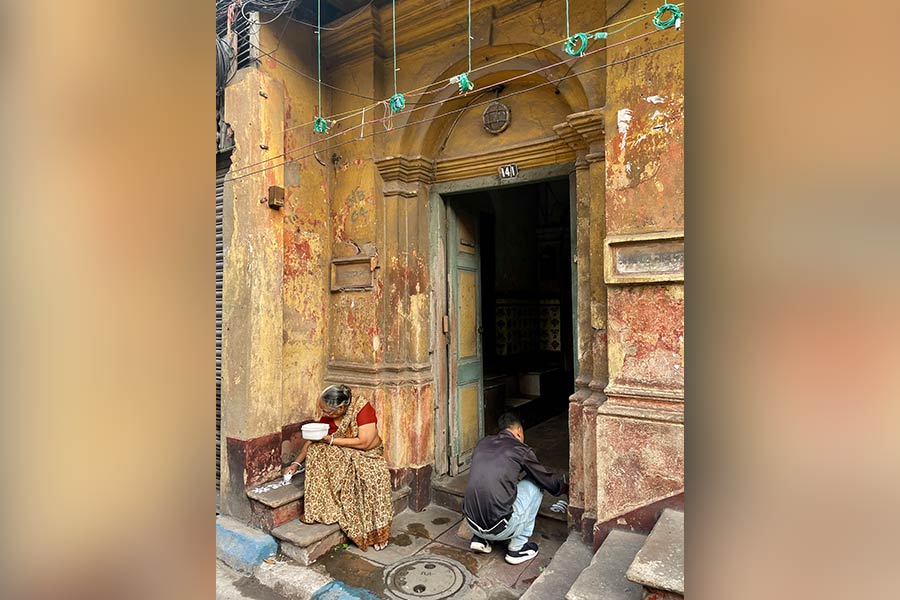
Residents make alponas at the entrance
“What stories I could tell you… of the time when the Borals would provide accommodation to the baijis in one of the side buildings with large rooms and an uthon in the middle. The house would be frequented by the sahibs who came in buggies during those gaslight days. Or the time when Netaji visited 99 Premchand Boral Street, but that itself is our claim to fame…that Netaji ekhane eshey chhileyn. Or when our house provided refuge to the Naxalites searches were being conducted house to house. Aar ki boli?!
“I tried rekindling the para spirit when I sent out a message to more than 500 people – residents to rickshaw wallahs – in the neighbourhood to not cook at home, but to join me for a meal. Those were the days. Aamra party kortaam, but at the end of the day all of us from across party lines would discuss how the other party should have done better. Kintu shei spirit ta ekhon kothaye? There was a time when residents shed their political personalities when they came to the adda; aajke shobai bolay aamake neta boluk. We almost have a rule at the adda that we can discuss anything under the sun but not politics. Shomoy bodle gechey, saar!

‘If there is one aspect in which ‘shomoy ekdom bodle gechey’, it is in how doors have begun to close’
“If there is one aspect in which shomoy ekdom bodle gechey, it is in how doors have begun to close. There used to be a time when friends would be so close that residents would consider them to be brothers; we could walk into the homes of others at will; we slept in the homes of friends and our parents would never know where we were (without worrying much about it). Kichhu shomoy bodleychhey; kichu amra bodlechhi.”
I ended asking Tarunbabu about the ‘second most renowned personality’ remark. He smiled. Then ended with a name I might have heard wrong. He said: "CV Raman."
